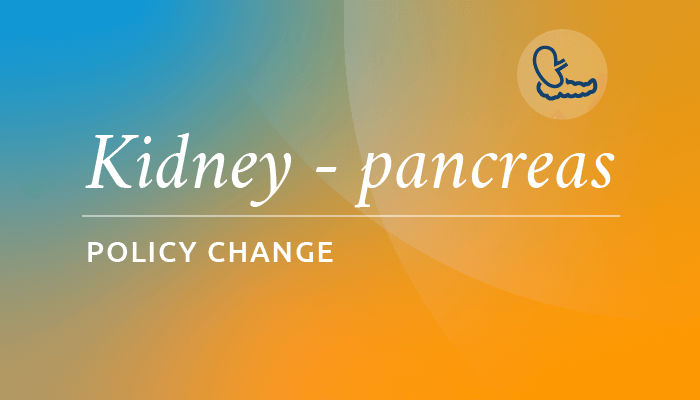Projected to increase equity in access for candidates nationwide
UNOS has implemented a new system for matching kidney and pancreas transplant candidates with organs from deceased donors.
The new approach is projected to increase equity in transplant access for candidates nationwide. It replaces distribution based on donation service area (DSA) and OPTN region with a more consistent measure of distance between the donor hospital and the transplant hospital for each candidate. This will further ensure the right organ gets to the right patient at the right time based on medical need rather than geography.
The policy was developed over nearly three years by organ donation and transplant experts, organ recipients and donor families from around the country, and input from thousands of people during three public comment cycles.
Kidney and pancreas offers will be offered first to candidates listed at transplant hospitals within 250 nautical miles of the donor hospital. Offers not accepted for any of these candidates will then be made for candidates beyond the 250 nautical mile distance.
Candidates also will receive proximity points based on the distance between their transplant program and the donor hospital. Proximity points are intended to improve the efficiency of organ placement by adding priority for candidates closer to the donor hospital. Candidates within the initial 250 nautical mile radius will receive a maximum of two proximity points, while those outside the initial circle will receive a maximum of four proximity points. The point assignment will be highest for those closest to the donor hospital and will decrease as the distance increases.
Additional policy updates implemented at the same time involve allocation of kidneys and pancreata from Alaska and prioritization of medically urgent kidney patients. The policies also change how released kidneys, pancreata, kidney-pancreas and islets are distributed in the new system when the original intended candidate is not able to be transplanted.
Statistical simulation modeling performed by the Scientific Registry of Transplant Recipients projects that the new kidney and pancreas policies will improve transplant access for key groups of transplant candidates, including children, women, ethnic minorities and candidates who are particularly hard to match for biological reasons.
UNOS has previously removed consideration of DSA and region from all other organ allocation systems and replaced them with a distance-based approach.
The new policy takes effect at a time of sustained deceased organ donation—2020 set an all-time high for the most lives saved by deceased organ donors.
Learn more about the implementation here.

